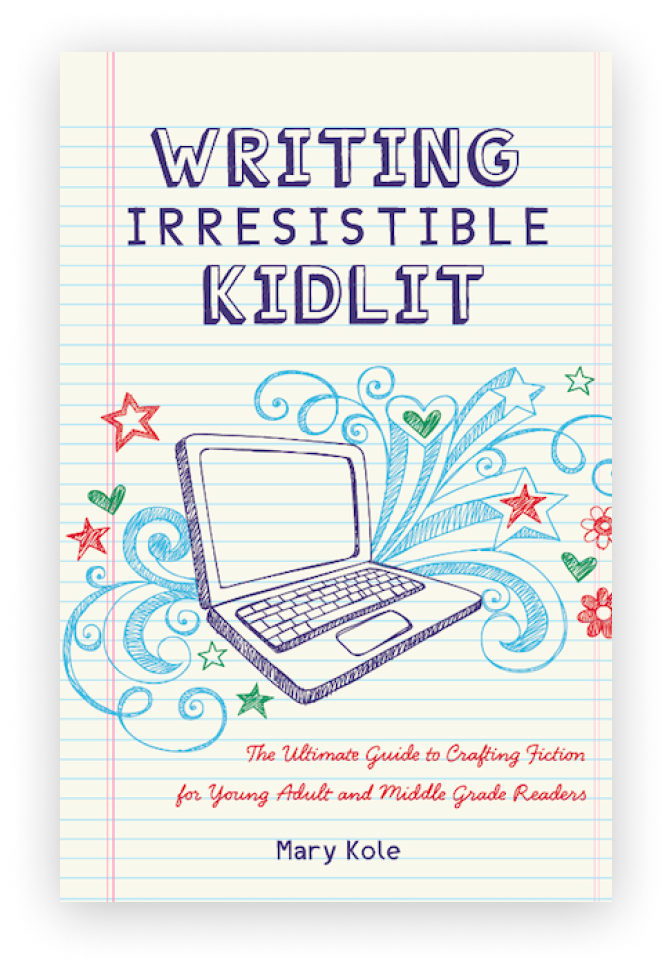How to Write Action Tags
By Mary Kole
Mary Kole is a former literary agent, freelance editor, writing teacher, author of Writing Irresistible Kidlit, and IP developer for major publishers, with over a decade in the publishing industry.
Whether you’re an aspiring writer or published author, you likely know how important it is to craft scenes that take readers on a journey. One of the ways to create a powerful emotional impact in your writing is through the use of action tags. In this article, I’ll be sharing everything you need to know about action tags in creative writing. From defining what action tags are and when to use them to understanding common mistakes and best practices, this article will help you enhance your writing skills and make your stories even more compelling.
What Are Action Tags in Creative Writing?
Action tags are short descriptive sentences that add details about a character's movements or actions to a scene, and they come before or after an instance of dialogue that’s also attributed to that character. They are used to break up dialogue and create a more dynamic and visual experience for readers. Action tags can include anything from body language to facial expressions, and they serve to give your characters more depth, personality, and realism. An action tag differs from a speech tag in that these sentences describe movement or physical appearance, and do not involve speech verbs, like speech tags do. (Speech tags are also connected to the instance of dialogue with a comma, while action tags are separated with a period.)
When to Use Action Tags in Scene
Action tags add benefit to your creative writing whenever there are prolonged sequences of dialogue. Too much back and forth between characters can leave readers feeling lost or confused, or worse, bored. This “talking heads” approach often feels flat and one-dimensional. Action tags create natural pacing in scene by creating breaks and pauses. Moreover, action tags emphasize the writing tone of a scene by describing the character's physical and emotional reactions. A great example of this is a tense scene where a character might grit their teeth, while relaxed scenes could include a character stretching their arms and relaxing their muscles. It’s also great to use action tags to add tension or dramatic irony, with a character saying something friendly, but their actions telling a different story.
How to Balance Action Tags and Speech Tags in Dialogue
Speech tags (like "said" and "asked") and action tags are both used to identify who's speaking in dialogue. A common mistake that writers make is using too many speech tags, or even worse, using speech tags that distract from the dialogue, e.g. crying, screaming. This is overwriting and you should pare back. When you have a short dialogue exchange between characters, you want to balance the dialogue and action tags. When you have longer dialogue exchanges, it's beneficial to use action tags to break up the dialogue and keep readers engaged.
A common mistake that writers make with action tags is overusing them. Too many action tags can break the flow and pace of a scene, making the reader lose track of the narrative structure or rhythm. Another common mistake is repetition, using the same action tags over and over, making them boring and less effective. Additionally, action tags should be connected to a character's dialogue and shouldn't be used as filler. It's essential to ask yourself whether an action tag is really enhancing the scene before using it.
Best Practices of Action Tags
To create maximum emotional impact with action tags, there are a few best practices you should keep in mind. First, stay within the perspective of the character and remain true to their personality during their actions. Second, action tags should complement the dialogue without distracting from it. Third, let action tags enhance a scene but avoid overusing them. Finally, always remember that the goal is to create an immersive experience for the reader, and well-placed action tags can achieve this.
Action tags, when used effectively, can transform your writing. By understanding the definition of action tags and knowing when and how to use them, writers can create more engrossing and captivating stories. Remember to balance action tags and speech tags and to avoid common mistakes like overusing them or using irrelevant tags. Follow best practices, remain within your character’s point of view perspective, keep dialogue and action tags complementing each other, and you’ll soon be expertly using action tags in your creative writing.

Click here to purchase Writing Irresistible Kidlit, my book on fiction craft for MG and YA novels, out from Writer's Digest Books. This will show you my writing craft philosophy and give you lots of valuable advice, including tips for the novel revision process and self-editing. There are over 35 example novels cited and discussed throughout. It’s a valuable resource for any writer’s toolkit.
Click here to purchase Irresistible Query Letters, my book on query letters, including over forty examples with comprehensive notes on each one. There’s a ton of submission advice, best practices, and insider information in these pages, and you’ll really enjoy seeing what other writers are doing in the slush.




